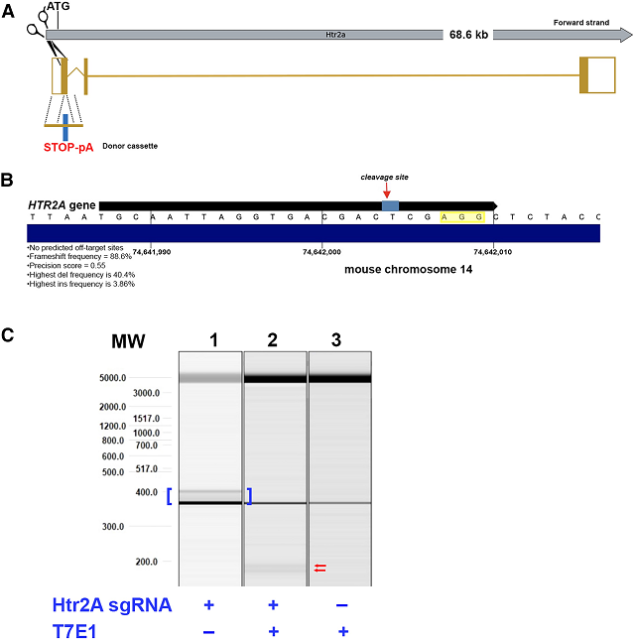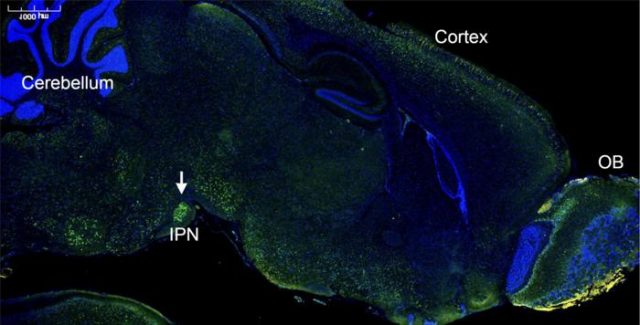Scientists Knock Out Anxiety Gene Using Noninvasive CRISPR for the First Time
- Normal Liver Cells Found to Promote Cancer Metastasis to the Liver
- Nearly 80% Complete Remission: Breakthrough in ADC Anti-Tumor Treatment
- Vaccination Against Common Diseases May Prevent Dementia!
- New Alzheimer’s Disease (AD) Diagnosis and Staging Criteria
- Breakthrough in Alzheimer’s Disease: New Nasal Spray Halts Cognitive Decline by Targeting Toxic Protein
- Can the Tap Water at the Paris Olympics be Drunk Directly?
Scientists Knock Out Anxiety Gene Using Noninvasive CRISPR for the First Time
- Should China be held legally responsible for the US’s $18 trillion COVID losses?
- CT Radiation Exposure Linked to Blood Cancer in Children and Adolescents
- FDA has mandated a top-level black box warning for all marketed CAR-T therapies
- Can people with high blood pressure eat peanuts?
- What is the difference between dopamine and dobutamine?
- How long can the patient live after heart stent surgery?
Scientists Knock Out Anxiety Gene Using Noninvasive CRISPR for the First Time.
Anxiety affects many people, and for some, medication doesn’t help.
Researchers have developed a novel, non-invasive method to deliver CRISPR/Cas9 gene-editing technology into the brain, which has been a challenge before, to knock out genes that cause anxiety.
While the technique has so far only been used in mice, the findings open the door to the development of new treatments, especially for those resistant to the drug.

Mental health is an integral part of our lives. Poor mental health can affect our well-being, ability to work and relationships with family, friends and the wider community.
Anxiety disorders—including generalized anxiety disorder, panic disorder, and social anxiety disorder—are characterized by excessive fear and worry severe enough to cause significant distress or impairment of functioning.
According to the World Health Organization (WHO), 301 million people worldwide suffered from anxiety disorders in 2019, including 58 million children and adolescents.
They also noted a 25 percent increase in the prevalence of anxiety disorders with the onset of the COVID-19 pandemic.
While anxiety disorders are often treated with daily medication, this can have side effects and, for some people, does not relieve their anxiety symptoms.
Now, researchers have developed a non-invasive method to deliver CRISPR/Cas9 gene-editing technology to the brain to knock out genes associated with anxiety and depression in mice.
They say this is the first successful demonstration of noninvasive CRISPR/Cas9 delivery capable of genetic modification across the blood-brain barrier.
As its name implies, the blood-brain barrier (BBB) is a structural and functional barrier that prevents harmful substances such as bacteria and viruses from entering the brain through the blood, while allowing essential nutrients to enter.
While this is important for maintaining our health, the BBB is very effective in preventing therapeutic agents from entering the brain.

Precise gene editing using CRISPR/Cas9 has shown great potential for treating a variety of diseases, including muscular dystrophy, HIV and lung cancer.
CRISPR systems use an enzyme (Cas9) that cuts out specific sections of DNA under the direction of a guide RNA (gRNA).
It removes problematic genes, such as those that cause disease. But, like other therapeutic agents, the BBB poses challenges to the CRISPR system.
In the current study, the researchers experimented with intranasal delivery of the CRISPR/Cas9 system to see if it could successfully cross the BBB and knock out the serotonin receptor (HTR2A) gene that regulates serotonin availability.
This neurotransmitter performs many functions, including regulating mood. Too little serotonin has been linked to anxiety and depression, which is why people with these conditions often take selective serotonin reuptake inhibitors (SSRIs), which increase serotonin levels in the brain.
Intranasally delivered therapeutic agents reach the central nervous system via neural pathways within the nasal cavity. Not only is it a practical delivery method, but it is also non-invasive.

The researchers injected a viral vector, an inactivated adeno-associated virus (AAV), into the noses of mice, which delivered the gRNA to neurons in the brain, allowing it to bind to the target HTR2A gene, which was subsequently activated.
Cas9 excision. AAVs are commonly used as vehicles to deliver CRISPR/Cas9 payloads because they are considered safe and have a low potential to elicit an immune response.
The researchers used subtypes of AAV9, a highly efficient vector that delivers payloads to neurons throughout the central nervous system.
Five weeks after administration of the gene-editing package, the mice were tested for anxiety using the light-dark behavioral test and the marble burial test.
In the light-dark test, the mice could choose to explore a bright or dark room. Anxious mice tended to spend more time in the dark room.
For the marble burial test, glass marbles were placed in a grid in the sawdust and mice were allowed to explore the cage for a fixed period of time. Anxious mice bury more marbles.
The researchers found an 8.47-fold reduction in HTR2A expression in the treated mice. Regarding the marble burial test, these mice buried 14.8% fewer marbles than the control group.
Also, for the light-dark test, the treated mice spent significantly more time in the light box (35.7% increase) and entered the light box more often (27.5% increase).
These results were comparable to mice treated with the benzodiazepine diazepam, which spent 40 percent of their time in the light box, leading the researchers to conclude that their HTR2A-targeting treatment was as effective as the drug.
“Our results show that a significant anxiolytic [anxiety-reducing] effect was observed even at a low percentage of neuronal gene editing,” the researchers said. “Delivery within the CNS [central nervous system] was accomplished using a noninvasive intranasal delivery platform that bypasses the BBB, which is often a major obstacle for large cargoes such as CRISPR/Cas9,” said the researchers, whose proof-of-concept study showed that certain traits can change over the long term, which has important implications for the development of new drugs for anxiety and depression, especially in those who are drug-resistant.
The study was published in the journal PNAS Nexus.
Scientists Knock Out Anxiety Gene Using Noninvasive CRISPR for the First Time
(source:internet, reference only)
Disclaimer of medicaltrend.org
Important Note: The information provided is for informational purposes only and should not be considered as medical advice.



